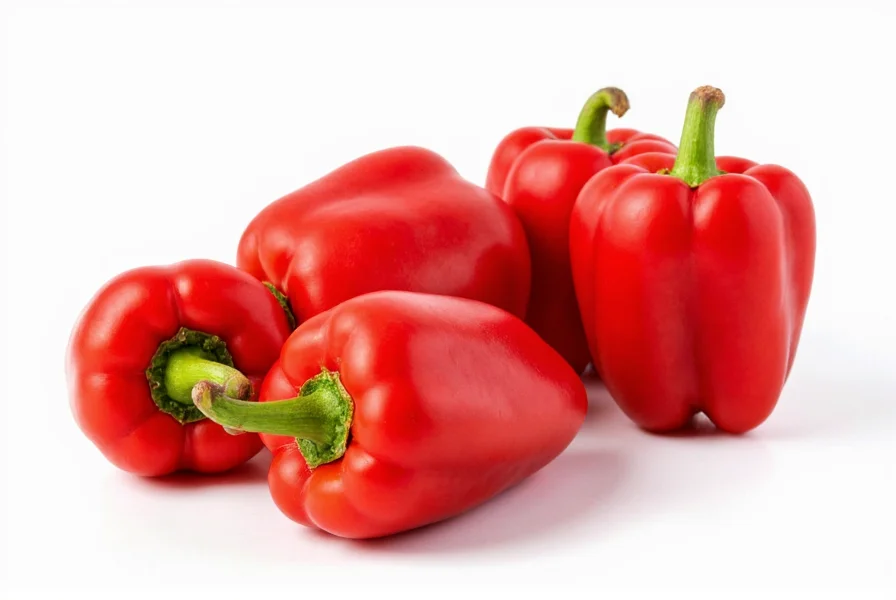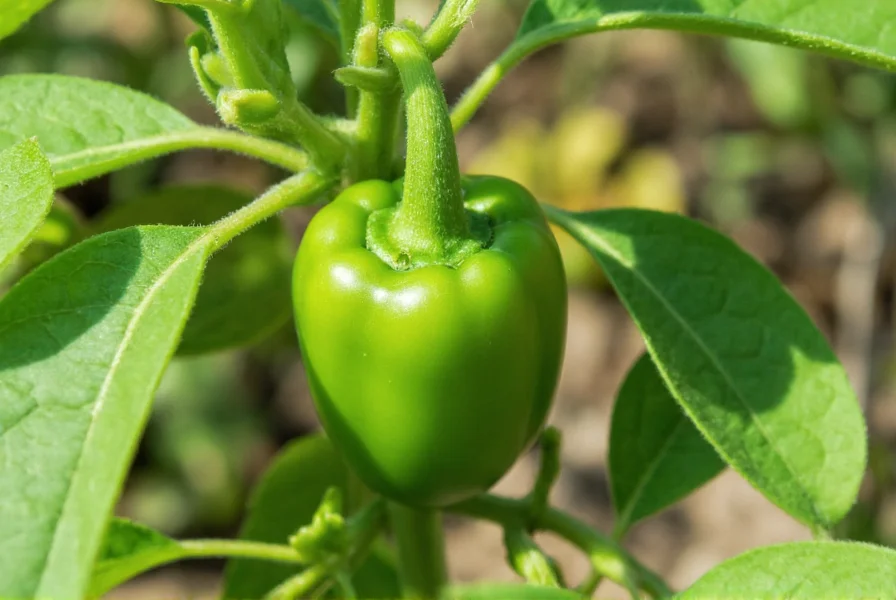The Peter pepper plant (Capsicum annuum 'Peter') is a distinctive chili pepper variety known for its unique phallic-shaped fruits, medium heat level (5,000-15,000 Scoville units), and versatile culinary applications. This heirloom variety produces upright, conical peppers that transition from green to vibrant red when fully mature, typically reaching 2-3 inches in length. Unlike many hot peppers, Peter peppers offer a balanced flavor profile with fruity undertones that make them suitable for fresh consumption, pickling, and hot sauce production.
For gardeners seeking an unusual yet practical chili variety, the Peter pepper plant delivers both visual interest and culinary versatility. This comprehensive guide explores everything you need to successfully grow and utilize this distinctive pepper variety in your garden and kitchen.
Understanding Peter Pepper Characteristics
Native to Central America but cultivated worldwide, Peter peppers stand out for their unmistakable shape and moderate heat. The fruits grow upright on compact plants that typically reach 18-24 inches in height, making them ideal for container gardening. Each pepper develops with a distinctive curved shape resembling human anatomy, which has earned them various colloquial names while maintaining their official horticultural designation as 'Peter' peppers.
When evaluating how to identify peter pepper plants, look for these key characteristics:
| Characteristic | Description |
|---|---|
| Shape | Distinctive curved, upright conical shape with noticeable anatomical resemblance |
| Size | 2-3 inches in length when mature |
| Heat Level | 5,000-15,000 Scoville Heat Units (comparable to serrano peppers) |
| Flavor Profile | Fruity with citrus notes, moderate heat that builds gradually |
| Maturation Time | 70-80 days from transplanting |
| Plant Height | 18-24 inches, compact growth habit |
Growing Requirements for Peter Pepper Plants
Successfully cultivating peter pepper plant care guide begins with understanding their specific environmental needs. These peppers thrive in warm conditions similar to other chili varieties but demonstrate slightly more tolerance to variable conditions once established.
Optimal Growing Conditions
For gardeners researching best soil for peter pepper plants, aim for well-draining soil with a pH between 6.0-6.8. Incorporate organic matter like compost to improve soil structure and nutrient content. Peter peppers require at least 6-8 hours of direct sunlight daily, though they appreciate some afternoon shade in extremely hot climates.
When considering growing peter peppers in containers, select pots with minimum 3-gallon capacity and ensure adequate drainage. Container-grown plants require more frequent watering and feeding than garden-planted specimens. Use a high-quality potting mix rather than garden soil for best results.

Planting and Care Instructions
Start Peter pepper seeds indoors 8-10 weeks before your last expected frost date. Maintain soil temperature around 80-85°F (27-29°C) for optimal germination, which typically occurs within 7-14 days. Once seedlings develop two true leaves, transplant to individual pots.
When transplanting to your garden or larger containers, follow these peter pepper plant care guide recommendations:
- Space plants 18-24 inches apart in rows 24-36 inches apart
- Plant at the same depth as their nursery containers
- Water thoroughly after planting
- Apply 2-3 inches of organic mulch to conserve moisture
Consistent moisture is critical for how to grow peter pepper plants successfully. Water when the top inch of soil feels dry, providing approximately 1-2 inches of water weekly. Avoid overhead watering to prevent fungal diseases. During fruit set and development, maintain even soil moisture to prevent blossom end rot and fruit drop.
Fertilization Strategy
For optimal growth, implement a balanced fertilization approach. At planting time, incorporate a slow-release balanced fertilizer (10-10-10) into the soil. Once flowering begins, switch to a fertilizer higher in phosphorus and potassium to support fruit development. Many gardeners achieve excellent results with monthly applications of fish emulsion or compost tea for peter pepper plant characteristics enhancement.
Pest and Disease Management
Peter peppers generally demonstrate good resistance to common pepper diseases but remain vulnerable to typical garden pests. Monitor for aphids, spider mites, and pepper weevils. Implement these organic control methods:
- Regularly spray plants with strong water streams to dislodge pests
- Introduce beneficial insects like ladybugs and lacewings
- Apply neem oil solutions for persistent infestations
- Rotate crops annually to prevent soil-borne diseases
Harvesting Peter Peppers
Understanding when to harvest peter peppers significantly impacts flavor and heat development. For milder flavor, harvest when peppers reach full size but remain green. For maximum heat and sweetness, allow peppers to fully ripen to their characteristic red color on the plant.
Use sharp scissors or pruning shears to harvest, cutting the stem rather than pulling the fruit. Wear gloves when handling mature peppers, as the capsaicin can irritate skin. Regular harvesting encourages continued production throughout the growing season.

Culinary Applications
The peter pepper culinary uses extend beyond novelty value. Their balanced heat and fruity flavor make them versatile in various dishes:
- Fresh consumption: Add sliced peppers to tacos, nachos, or salads for moderate heat
- Hot sauces: Blend with vinegar, garlic, and fruits for complex hot sauces
- Pickling: Preserve whole peppers in vinegar brine for year-round use
- Stuffed peppers: Their shape makes them ideal for creative stuffing presentations
- Drying: String and dry peppers for winter use in soups and stews
When comparing peter pepper vs cayenne, note that Peter peppers offer less heat (cayenne ranges 30,000-50,000 SHU) with more pronounced fruitiness. They work well as a substitute for serrano peppers in recipes requiring moderate heat.
Preservation Techniques
To extend the enjoyment of your harvest, consider these preservation methods for your peter pepper plant yield:
- Freezing: Chop peppers and freeze in airtight containers for up to 6 months
- Drying: Use a food dehydrator or oven on lowest setting until brittle
- Oil preservation: Submerge in olive oil with garlic for flavored oil and preserved peppers
- Refrigeration: Store unwashed peppers in crisper drawer for 2-3 weeks
Troubleshooting Common Growing Issues
Gardeners following a peter pepper plant care guide may encounter these common issues:
- Blossom drop: Caused by temperature extremes or inconsistent watering - maintain stable conditions
- Leaf curling: Often indicates aphid infestation or water stress - inspect undersides of leaves
- Poor fruit set: May result from insufficient pollination - gently shake plants during flowering
- Yellowing leaves: Could indicate nutrient deficiency - apply balanced fertilizer
Conclusion
The Peter pepper plant offers gardeners a unique combination of visual interest, moderate heat, and culinary versatility. By understanding its specific growing requirements and characteristics, you can successfully cultivate this distinctive variety and enjoy its flavorful peppers throughout the growing season and beyond. Whether you're an experienced chili grower or a gardening novice, the Peter pepper's relatively straightforward care requirements make it an accessible and rewarding addition to any garden.
How hot are Peter peppers compared to other chili varieties?
Peter peppers rate between 5,000-15,000 Scoville Heat Units, placing them in the medium heat category. They're significantly milder than cayenne peppers (30,000-50,000 SHU) but hotter than jalapeños (2,500-8,000 SHU). Their heat builds gradually with noticeable fruity undertones that balance the spiciness.
Can Peter peppers be grown in containers successfully?
Yes, Peter peppers grow exceptionally well in containers due to their compact size (18-24 inches tall). Use a minimum 3-gallon container with drainage holes, quality potting mix, and place in a location receiving 6-8 hours of sunlight daily. Container-grown plants require more frequent watering and feeding than garden-planted specimens, but their manageable size makes them ideal for patios, balconies, and small-space gardening.
When is the best time to harvest Peter peppers for maximum flavor?
For mild flavor with fresh pepper taste, harvest Peter peppers when they reach full size (2-3 inches) but remain green. For maximum sweetness and heat development, allow peppers to fully ripen to their vibrant red color on the plant. The red peppers develop more complex flavor compounds and higher capsaicin content. Always use scissors to cut peppers from the plant rather than pulling them to avoid damaging the plant.
What are the most common pests affecting Peter pepper plants?
Peter peppers commonly face aphids, spider mites, and pepper weevils. Aphids cluster on new growth and undersides of leaves, while spider mites create fine webbing. Pepper weevils bore into fruits causing premature drop. Prevent infestations through proper spacing, regular inspection, and introducing beneficial insects. For existing problems, use strong water sprays, neem oil solutions, or insecticidal soaps as organic control methods.
How do Peter peppers differ from similar-shaped hot peppers like the Trinidad Scorpion?
While both have distinctive shapes, Peter peppers (5,000-15,000 SHU) are significantly milder than Trinidad Scorpion peppers (1,200,000-2,000,000 SHU). Peter peppers have a compact growth habit (18-24 inches) compared to the larger Trinidad Scorpion plants. Flavor-wise, Peter peppers offer fruity citrus notes with moderate heat, while Trinidad Scorpions deliver intense, immediate heat with less complex flavor. Peter peppers are primarily grown for culinary use, while Trinidad Scorpions are often used for extreme heat challenges.











 浙公网安备
33010002000092号
浙公网安备
33010002000092号 浙B2-20120091-4
浙B2-20120091-4